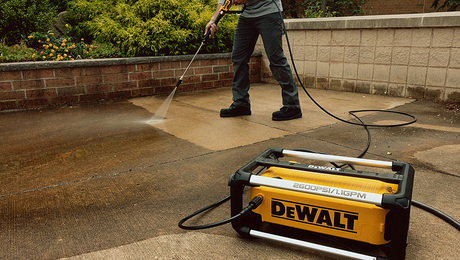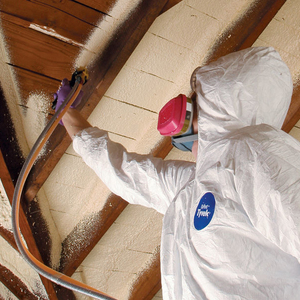Wiring electrical radiant floor heat to Loadcenter
I’m in the exploratory stages now of installing a 240V electric radiant heating underneath a tile installation in my new basement. The problem I’m having is which circuit breaker to use and how to wire it up.
I have an Eaton Cutler/Hammer loadcenter and found both a double pole 240V/15A and a 20A circuit breaker that fits, and the electric heating calls for no more than 15A on their 240V version through a GFCI-protected thermostat.
The thermostat manual simply calls for a single 2-wire type Romex power cable and sends the power out to the floor via the same. All my experience with double pole breakers involve two hot lines going to the fixture in question.
Am I correct in assuming that I can wire up either a 14-2 or 12-2 black-hot wire to one lug on the breaker (total wattage on the floor heating TBD and staying within the 80% rule)?



















Replies
You should buy cable with two colored wires (black/red or blue/red or whatever) vs black/white. The two wires go to opposite sides of the 240V breaker.
The problem is that there is no connection point for a second hot wire at the thermostat, only 1 hot and 1 neutral.
They appear to expect you to use black/white wire, even though you shouldn't. Very strange.
Actually looking at some more 240V installations of baseboard heaters (as an example), they do not have a neutral connection. I'm guessing the white wire in the this case should have been labeled as a hot line.
Right -- most 240V heating installations do not use a neutral. So there should be no white wire in the cable. Under some circumstances you're permitted to "re-designated" the white (by wrapping it with red tape, eg), though some inspectors will not permit that. If you do "re-designate" the white, wrap essentially the entire exposed length (on both ends) with colored tape (or approved paint) -- don't just put a little bit of tape on it.
But you should be able to find the correct cable.
Very odd that the thermostat instructions show white wire -- it's not code.
Around here you're allowed to use regular white/black Romex for such things, but you're supposed to mark the neutral with either red or black tape to indicate a hot conductor.
Like I said, some inspectors allow re-marking and some don't.. And the "proper" cable is readily available (even at most BBs, if you know where to look), so there's little reason for using black/white unless it's a one-off situation.
Installing such a floor requires you to use a 'megger' at several points in the installation, and document the results. Such tools are expensive- costing as much as you would pay a pro to do the job.
Run 12/3. If you don't use the white, just leave a 6" pigtail, cap it off, fold it into the back of the box. It's easier to ignore an extra wire than to add one later. For example, you might need the white later to add a timer.
If the thermostat only switched one wire, I'd have another switch nearby that REALLY turns the heat off. I'm not happy relying on the GFCI alone. Otherwise, that floor is still 'live' even when the thermostat is 'off.'
Actually, that is a good point. I could throw a double-pole swtich upstream of the thermostat to give a means to totally cut the power to the floor.